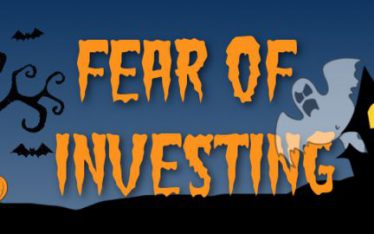In a world of negative yields, oil price roller coasters, European bank weakness, and intra-day volatility resulting from global interconnectedness, it is natural to want to add a loss floor, minimize return volatility, or both. Even for the most disciplined long-term asset managers and their investors, it is hard to not get distracted by this developing trend of volatility. How do you ensure you are prepared for the next stage of stabilization until these left tail events move in the expected range?
What is a perfect hedge for these market transitions? A strategy which guarantees zero losses? A strategy which enables return smoothing? A strategy that offers a perfect correlation offset to select section of the portfolio? I view the perfect hedge as a strategy that meets the desired objective, which could be one or all of the above within a low margin of error.
The facts
- Over the past 4 decades, equity markets have ended the month in negative territory roughly 50% of the time, yet continuous hedging usually generates losses.
- Even though risk assets seem uncorrelated in normal market conditions, their correlations converge and are predictable during large and extended selloffs. Irrespective of fundamentals and economic cycles, gold, treasuries, JGB, JPY, USD remain psychological flight to quality / safety assets. And long volatility remains a technical flight to safety trade.
- There is no zero-cost hedge. One is paying in opportunity costs if not in premium or carry when structuring the hedge.
- Most folks start hedging in the middle of heightened period of volatility. This is usually a negative payoff function given the expensive entry point. Fear can do funny things to the market (reversal of the buy low sell high principle).
Do hedges always work?
The short answer is NO. Nevertheless, the following strategies are effective when adapted for the for the risk being hedged (return drawdown, volatility, lights out scenario).
- Reduce the footprint of your portfolio by (a) moving to cash, or (b) reducing gross exposure. Going to cash should always be the first choice, as it’s the most effective form of hedging. However, certain technical or psychological factors may not be optimal for strategy (sale restrictions, benchmark compliance, and/or strong conviction).
- Reduce net exposure using volatility minimizing overlays. This strategy invariably results in layers of shorts, introducing new basis risks. For example, hedging an equity portfolio with credit shorts introduces asset-class basis, or hedging a cash portfolio with synthetics introduces liquidity and technical basis.
- Buy tail risk hedges to protect against major disruptions in the markets in the range of 3+ standard deviation moves. Examples are buying deep out of the money puts on risk assets, or calls on flight to quality assets, or tail risk hedges tied to an event that could derail the markets.
The value of natural hedges
Unless hedging is offsetting secondary and unwanted risks such as FX translation risk, or rate duration for a credit portfolio, or exposure to oil producers for a PE firm focused on airline industry, continuous hedging is never a solution.
In addition, hedging strategies introduce basis risk and result in slippage from the roll cost. However, the cost of hedging can be lower if the underlying portfolio had natural hedges. Let’s take an example of cars. Insurance cost is lower on the models that have good crash rating or safety controls. If portfolio construction has built-in mitigations, hedges will cost less. Some of these protections come in the form of structural value protection such as low entry valuation, strong balance sheets, diversification, and lower leverage.
What is right for you?
Most everyone has insurance policies in their personal lives and work environment. Certain events demand insurance policies, while others require behavior changes such as fire drills. For the events that can be simulated, you can practice for, but for the one’s you cannot, you buy insurance or buy protective gear. You can’t simulate a storm. But buying products that have weathered simulation, such as storm windows, can help mitigate your risk of injury.
Similarly, the choice of hedge instrument should be based on what assets and instruments provide the most benefit. As a rule, the hedge instrument should be simple, should be liquid, have a significant negative stressed correlation to the portfolio being hedged, and ideally higher beta. It’s easy to be carried away with financial engineering solutions and be creative, but that should be left for the long side of the portfolio. Any hedging strategy should be supported by a robust scenario analysis, much like real life fire drills. It should not be a source of distraction.
How do you make hedging right for you?
Developing a hedge framework that calibrates to investors’ preferences and objectives, and answers the following questions is crucial in defining successful execution. This is not a cookbook and the same recipe doesn’t work for everyone.
- Annual hedge budget: How much hedging can you afford? 2% of AUM or 5% of AUM?
- Hedge horizon: What is the time horizon you are hedging? 6 months, 12 months?
- Hedge outcome: What is being hedged? Systemic valuation risk, idiosyncratic / default risk, event risk, or secondary risks (FX and interest rate immunization)?
- Methodology for computing a hedge ratio.
- Thresholds for entry, exit and rebalancing to move away from timing the market. Using a scientific, systematic approach for execution is important to counteract emotional responses, given these execution decisions are crucial during times of stress.
I am not suggesting it is easy, but if the framework incorporates these fundamental elements, it adds objectivity to a decision which is highly subjective. While there is no perfect hedge, there is, in fact, a near-perfect hedge framework, which doesn’t always guarantee favorable results. Having no framework, almost always does result in unfavorable results.
Originally published on Hedgeconnection



